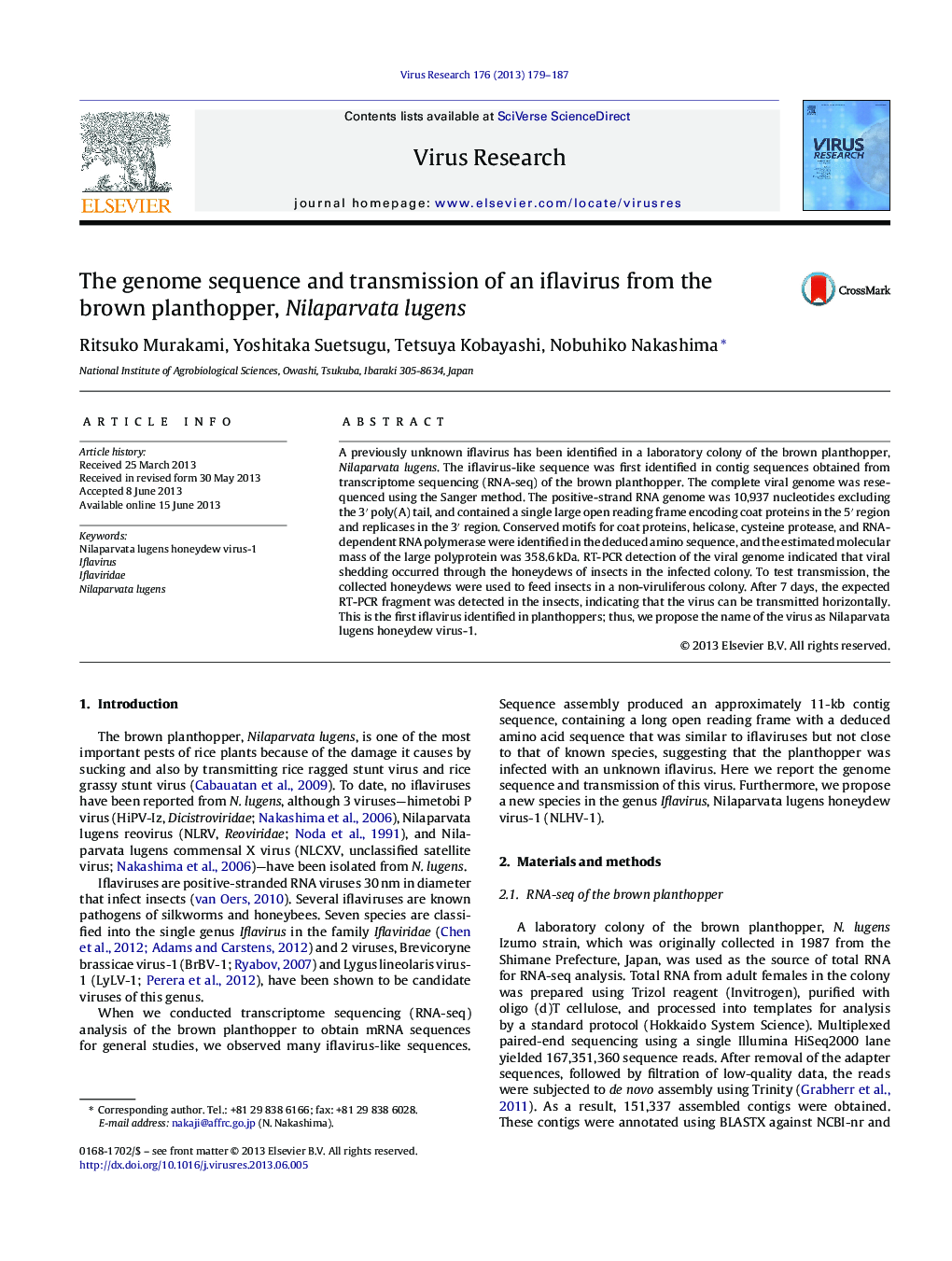| Article ID | Journal | Published Year | Pages | File Type |
|---|---|---|---|---|
| 6142980 | Virus Research | 2013 | 9 Pages |
Abstract
A previously unknown iflavirus has been identified in a laboratory colony of the brown planthopper, Nilaparvata lugens. The iflavirus-like sequence was first identified in contig sequences obtained from transcriptome sequencing (RNA-seq) of the brown planthopper. The complete viral genome was resequenced using the Sanger method. The positive-strand RNA genome was 10,937 nucleotides excluding the 3â² poly(A) tail, and contained a single large open reading frame encoding coat proteins in the 5â² region and replicases in the 3â² region. Conserved motifs for coat proteins, helicase, cysteine protease, and RNA-dependent RNA polymerase were identified in the deduced amino sequence, and the estimated molecular mass of the large polyprotein was 358.6Â kDa. RT-PCR detection of the viral genome indicated that viral shedding occurred through the honeydews of insects in the infected colony. To test transmission, the collected honeydews were used to feed insects in a non-viruliferous colony. After 7 days, the expected RT-PCR fragment was detected in the insects, indicating that the virus can be transmitted horizontally. This is the first iflavirus identified in planthoppers; thus, we propose the name of the virus as Nilaparvata lugens honeydew virus-1.
Keywords
Related Topics
Life Sciences
Immunology and Microbiology
Virology
Authors
Ritsuko Murakami, Yoshitaka Suetsugu, Tetsuya Kobayashi, Nobuhiko Nakashima,
